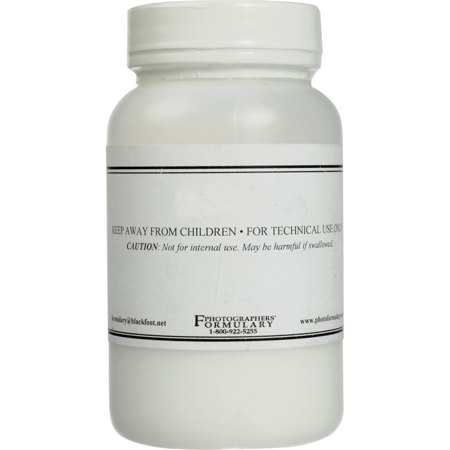
Need help? Ask our experts.
Photographers' Formulary Sodium Thiocyanate is primarily used in photography as an effective substitute for potassium thiocyanate on a weight-for-weight basis.
When Sodium Thiocyanate is dissolved, it significantly lowers the temperature of the water.
Being deliquescent means that Sodium Thiocyanate has the ability to absorb moisture from the environment. It's recommended to use it in percentage solutions because of this characteristic.
Yes, Sodium Thiocyanate is a versatile tool that can be used by both professional photographers and hobbyists.
Review Summary
Sodium isocyanate
Rhodanide
Sodium rhodanate
Potassium rodanide
Thiocyanic acid, sodium salt
Sodium rhodanide
Sodium sulfocyanate
Colorless or white deliquescent crystals
Odorless
Substitute for potassium thiocyanate weight for weight
NaSCN
10g (0.35oz)
Discover the power and versatility of Photographers' Formulary Sodium Thiocyanate, a crucial component in the world of photography. This 10g Sodium Thiocyanate is commonly used as an effective substitute for potassium thiocyanate, offering a weight-for-weight exchange that simplifies your photographic processes.
When dissolved, Sodium Thiocyanate significantly lowers the temperature of the water, a unique characteristic that sets it apart from other photographic chemicals. This property can be leveraged to achieve specific effects and results in your photographic endeavors.
Moreover, it's important to note that Sodium Thiocyanate exhibits a deliquescent nature. This means it has the ability to absorb moisture from the environment, which can be beneficial in certain photographic applications. However, due to this characteristic, it is recommended to use Sodium Thiocyanate in percentage solutions to maintain its efficacy and longevity.
Whether you're a professional photographer or a hobbyist, the Photographers' Formulary Sodium Thiocyanate is a valuable addition to your photography toolkit. Its unique properties and versatile applications make it an essential component in a wide range of photographic processes.